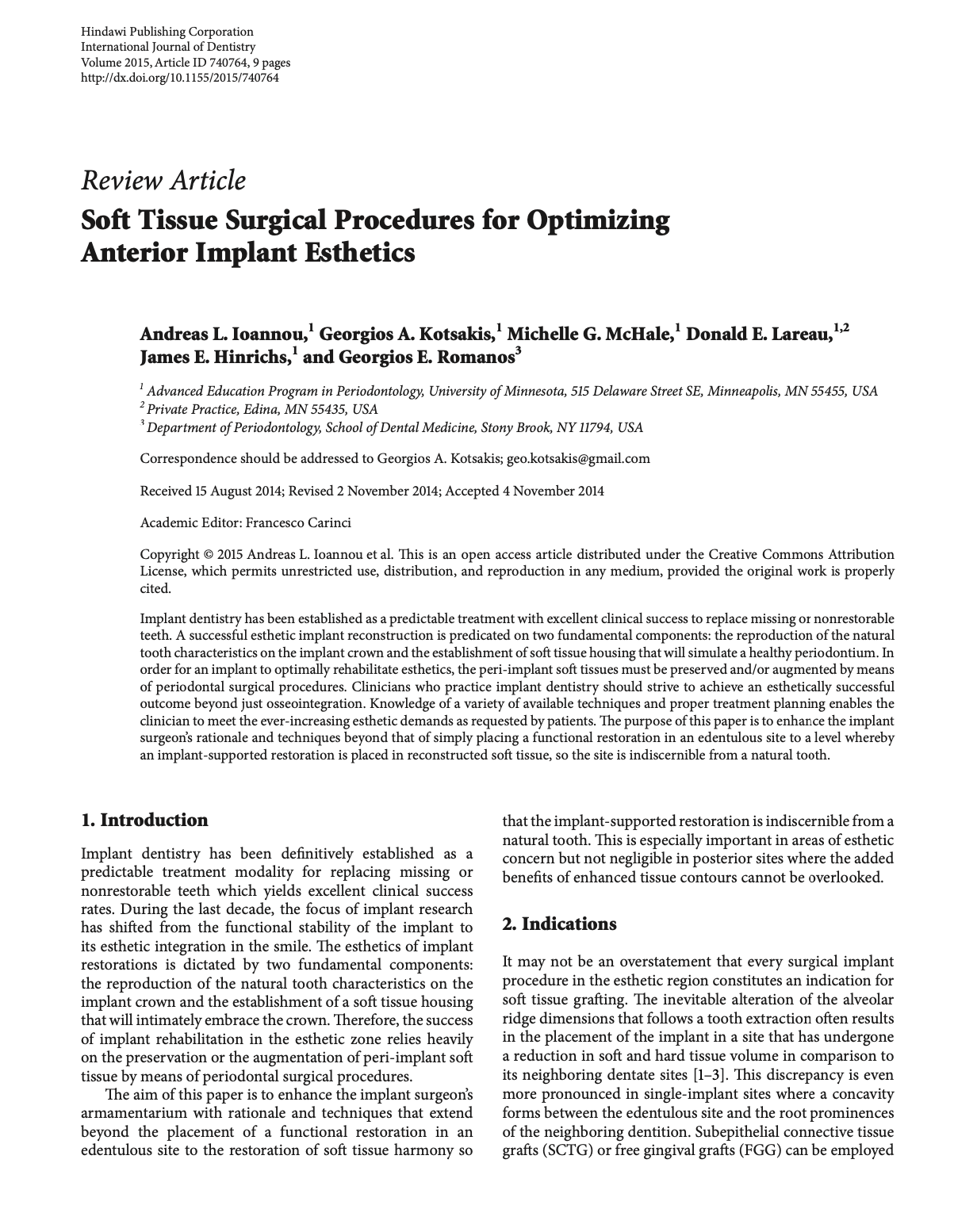Citation: Int J Dent. 2015;2015:740764.
Authors: Andreas L. Ioannou, Georgios A. Kotsakis, Michelle G. McHale, Donald E. Lareau, James E. Hinrichs, and Georgios E. Romanos
Abstract: Implant dentistry has been established as a predictable treatment with excellent clinical success to replace missing or nonrestorable teeth. A successful esthetic implant reconstruction is predicated on two fundamental components: the reproduction of the natural tooth characteristics on the implant crown and the establishment of soft tissue housing that will simulate a healthy periodontium. In order for an implant to optimally rehabilitate esthetics, the peri-implant soft tissues must be preserved and/or augmented by means of periodontal surgical procedures. Clinicians who practice implant dentistry should strive to achieve an esthetically successful outcome beyond just osseointegration. Knowledge of a variety of available techniques and proper treatment planning enables the clinician to meet the ever-increasing esthetic demands as requested by patients. The purpose of this paper is to enhance the implant surgeon’s rationale and techniques beyond that of simply placing a functional restoration in an edentulous site to a level whereby an implant-supported restoration is placed in reconstructed soft tissue, so the site is indiscernible from a natural tooth.

